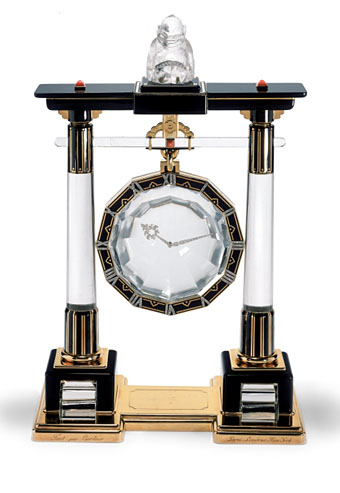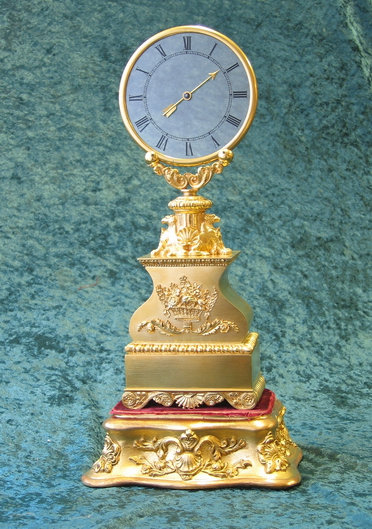Yesterday’s post concerned skeleton clocks so I have to follow up with something about mystery clocks, those fascinating devices whose hands move without any apparent attachment to gears or clockwork. It’s the glass that moves, of course, and the trick is easily puzzled out in many of the pieces with circular faces. Rather more ingenious are square clocks like the simple and elegant Smiths Electric Mystery Clock from 1934 which used a central pane of glass moving from side to side to operate the hands. Especially impressive is this one-off piece which is entirely clear and seems to have no moving parts at all.
The clocks shown here are among the more lavish examples. The piece above is an early model from circa 1837 credited to Jean Eugène Robert-Houdin, the renowned stage magician who was also a notable inventor, clockmaker and scientist. Below is one of a series of Art Deco-styled clocks made by Cartier during the 1920s. Having the clock suspended rather than supported is an unusual touch which adds just that bit more mystery.

Previously on { feuilleton }
• Skeleton clocks
• The Midsummer Chronophage
• The Corpus Clock


These are great!
I don’t care much about time, but definitely love a good clock!
I’m the same. Especially like unusual ones.